|
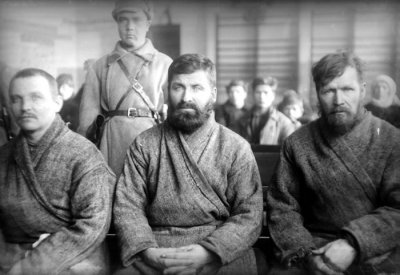 Scene
from the Moscow Purge Trial
Scene
from the Moscow Purge Trial
During the second
half of the 1920s, Joseph Stalin set the
stage for gaining absolute power by employing police repression
against opposition elements within the Communist Party. The
machinery of coercion had previously been used only against
opponents of Bolshevism, not against party members themselves. The
first victims were Politburo members Leon Trotskii, Grigorii
Zinov'ev, and Lev Kamenev, who were defeated and expelled from
the party in late 1927. Stalin then turned against Nikolai
Bukharin, who was denounced as a "right opposition," for
opposing his policy of forced collectivization and rapid
industrialization at the expense of the peasantry....
The murder of Sergei Kirov on December 1, 1934,
set off a
chain of events that culminated in the Great Terror of the 1930s. Kirov
was a full member of the ruling Politburo, leader of the
Leningrad party apparatus, and an influential member of the
ruling elite. His concern for the welfare of the workers in
Leningrad and his skill as an orator had earned him considerable
popularity. Some party members had even approached him secretly
with the proposal that he take over as general secretary.
It is doubtful that Kirov represented an
immediate threat to
Stalin's predominance, but he did disagree with some of Stalin's
policies, and Stalin had begun to doubt the loyalty of members of
the Leningrad apparatus. In need of a pretext for launching a
broad purge, Stalin evidently decided that murdering Kirov would
be expedient. The murder was carried out by a young assassin
named Leonid Nikolaev. Recent evidence has indicated that Stalin
and the NKVD planned the crime.
Stalin then used the murder as an excuse for
introducing
draconian laws against political crime and for conducting a
witch-hunt for alleged conspirators against Kirov. Over the next
four-and-a-half years, millions of innocent party members and
others were arrested -- many of them for complicity in the vast
plot that supposedly lay behind the killing of Kirov. From the
Soviet point of view, his murder was probably the crime of the
century because it paved the way for the Great Terror....
During the Great Terror, which
included the notorious show trials of Stalin's former Bolshevik
opponents in 1936-1938 and reached its peak in 1937 and 1938,
millions of innocent Soviet citizens were sent off to labor camps
or killed in prison.
By the time the terror subsided in 1939, Stalin
had managed
to bring both the party and the public to a state of complete
submission to his rule. Soviet society was so atomized and the
people so fearful of reprisals that mass arrests were no longer
necessary. Stalin ruled as absolute dictator of the Soviet Union
throughout World War II and until his death in March 1953. [Library of Congress]
|
LINKS:
THE RED BOOK ON THE MOSCOW TRIALS, BY
LEON SEDOV
http://www.marxists.org/history/etol/writers/sedov/works/red/index.htm
VIDEO FOOTAGE OF BUKHARIN'S 1938 TRIAL
(YOUTUBE)
http://www.youtube.com/watch?v=nFB9G1HINXI
"THE MOSCOW TRIALS," WIKIPEDIA
http://en.wikipedia.org/wiki/Moscow_Trials
"STALIN'S GREAT TERROR: ORIGINS AND
CONSEQUENCES," BY PROFESSOR VADIM ROGOVIN
http://www.wsws.org/exhibits/1937/lecture1.htm
REVELATIONS FROM THE RUSSIAN ARCHIVES,
"REPRESSION AND TERROR: KIROV MURDER AND PURGES," LIBRARY OF CONGRESS
http://www.loc.gov/exhibits/archives/repk.html
PEOPLE'S COMMISSARIAT, "REPORT OF
COURT PROCEEDINGS, THE CASE OF THE TROTSKYITE-ZINOVIEVITE TERRORIST
CENTRE," AUGUST 1936.
http://art-bin.com/art/omoscowtoc.html
"AND THEY ALL CONFESSED" (ARTICLE
ABOUT 1936 TRIALS), BY GUDREN PERSSON
http://art-bin.com/art/amosc_preeng.html#back9
N. I. BUKHARIN'S LAST PLEA
http://art-bin.com/art/obukharin.html
PLEA FOR CLEMENCY FROM A. I. RYKOF
(1938), LIBRARY OF CONGRESS
http://www.loc.gov/exhibits/archives/a2rykov.html
ACCOUNT OF 1938 TRIAL (BUKHARIN,
"TRIAL OF 21") AND EXECUTIONS BY DMITRI MINAEV
http://www.executedtoday.com/2008/03/15/1938-trial-of-the-21/
"THE CASE OF BUKHARIN," BUKHARIN
ARCHIVE
http://www.marxists.org/archive/bukharin/works/1938/trial/index.htm
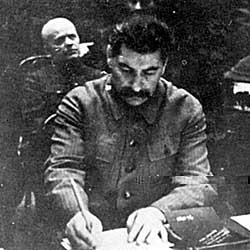
Stalin signing a death warrant in 1936
Nikolai Bukahrin, tried
and executed in 1938
additional
reading:
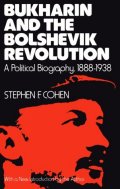 Cohen, Stephen F. Bukharin and the
Bolshevik Revolution: A Political Biography (Oxford University, 1980). Cohen, Stephen F. Bukharin and the
Bolshevik Revolution: A Political Biography (Oxford University, 1980).
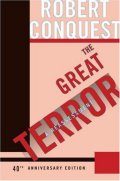 Conquest, Robert. The Great Terror: A
Reassessment. (Oxford University, 2007). Conquest, Robert. The Great Terror: A
Reassessment. (Oxford University, 2007).
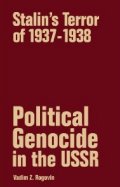 Rogovin,
Vadim. Stalin's
Terror of 1937-38: Political Genocide in the USSR. (Mehring Books, 2009). Rogovin,
Vadim. Stalin's
Terror of 1937-38: Political Genocide in the USSR. (Mehring Books, 2009).
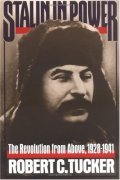 Tucker, Robert. Stalin in Power: The
Revolution from Above, 1928-1941. (Norton, 1992). Tucker, Robert. Stalin in Power: The
Revolution from Above, 1928-1941. (Norton, 1992).
articles:
Connor, Walter D. "The Manufacture of
Deviance: The
Case of the Soviet Purge, 1936-1938." American Sociological Review
37(Aug.
1972):403-413.
Gayn, Mark. "Behind the Moscow Purge." Nation 185.2 (1957):
23-24.
Heilbrunn,
Jacob. "The NY Times and the Moscow
Show Trials."
World Affairs 153.3 (Win 1991): 87.
|

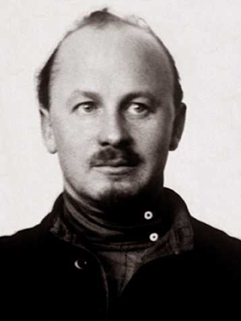
 Cohen, Stephen F. Bukharin and the
Bolshevik Revolution: A Political Biography
Cohen, Stephen F. Bukharin and the
Bolshevik Revolution: A Political Biography Conquest, Robert. The Great Terror: A
Reassessment.
Conquest, Robert. The Great Terror: A
Reassessment.  Rogovin,
Vadim. Stalin's
Terror of 1937-38: Political Genocide in the USSR.
Rogovin,
Vadim. Stalin's
Terror of 1937-38: Political Genocide in the USSR.  Tucker, Robert. Stalin in Power: The
Revolution from Above, 1928-1941. (Norton, 1992).
Tucker, Robert. Stalin in Power: The
Revolution from Above, 1928-1941. (Norton, 1992).